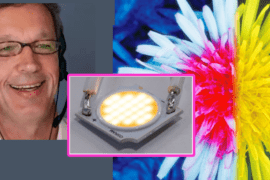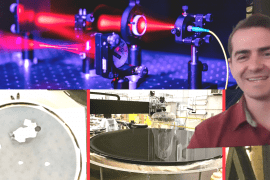Basic Conception (AKA BiCi) is a smart bicycle with tech that will make you drool all over the handlebars of your Huffy. Among other features, the goodies include built-in sensors that track your cycling stats to keep your ‘quantified self’ busy during the duration of your route to grandma’s house.
Built by AOAO Studio, the BiCi is hyper-focused on mixing great design with superior function in an urban bicycle design. The designer of the BiCi, Minchen Jiang, is currently seeking funding to bring the bicycle into production and we got a chance to talk with him about where the inspiration came from, what tools he used and how you can get one.
SS – What inspired you to create the project?
MJ – AOAO Studio was once merely an internet start-up. Our members were fond of cycling in our spare time, and more importantly, we believed that traditional bikes would be gradually replaced by smart ones just as cellphones have been in the last decade. We wanted to be part of this, so we started thinking about sourcing or developing a chip that would be essential to the coming era of smart bikes. We spoke to several bike makers, but they were very guarded and weren’t interested in collaborating or even discussing the idea. That’s when we thought – why don’t we make our own? And we went to do it. Since we live in Shanghai, a city where traffic jams are an accepted constant, we also envisioned our first-gen smart bike to be the ideal commuter bike. We hope BiCi will encourage more and more people to return to such an environmental-friendly option.
SS – What’s the story behind the BiCi?
MJ – We’re all cycling mad. Our CEO gave up a lucrative job in London to be a bike maker. Our CTO is a programmer with eight years of coding experience and 50,000 km worth of cycling behind him. Our marketing and supply chain manager owned and operated a large online bicycle store, our designers hail from global innovation and design firm Frog Design, and our CPA joined us from Silicon Valley. A love for technology, aesthetics and originality is built into our genes. And more importantly, we are all bicycle enthusiasts and entrepreneurs.
SS – What is the key innovation in the process of construction?
MJ – Putting GPS guides into the handlebars is something we’re pretty proud of. A lot of the danger from cycling (and driving, come to think of it) is from distraction. Even that split second of glancing at your GPS while you’re on the road can be enough to put you in danger, and trying to hear GPS voice instructions can be near impossible with the wind roaring in your ears! We wanted to make GPS more intuitive, designed especially for a cyclist.
SS – What was the biggest challenge that you faced in bringing the product to life?
MJ – Probably trying to run a hardware startup using a business model that’s more suited to software! Hardware is notoriously more difficult to develop because each stage of product testing and design costs so much more in real materials. But the difficulty was worth it – doing it this way helped us save a lot of time and made us more adaptable through the many phases of making BiCi better.
SS – Can you explain a bit more in detail about how and why you made the BiCi?
MJ – We sourced and tested a myriad of chips in search of the perfect size, durability and function. Once we had a model that worked like we wanted it to, our designers visited many carbon fibre factories to develop a frame that would work seamlessly with the heart of our bikes. Making the bike was very testing-heavy – there are a lot of components out there, but finding the right mix especially when we were building something fundamentally different from the average bike was tricky. There was no way to know for sure until we tried everything.
SS – What tools did you use in developing the BiCi?
MJ – We used Sketch and Pro-E for drawings, and 3D-Max for image. We built small prototypes with 3D printing. The BiCi frame mockup was made in our co-operative carbon fibre factory. Of course, we faced a lot of challenges, like developing the interactive lighting system for navigation, the water-proofing of the BiCi chip, the wiring inside the frame and so on. The greatest conundrum was how to make a perfect combination of both software and hardware. Bicycles are fundamentally mechanical objects controlled by the human body. After we added electrical components to it, how could they work seamlessly together? Our engineers spend many days (and some nights) testing and adjusting to work this out.
If you’re as impressed with this bike as we are, then hit the link to pledge and get one of your own BiCi Bikes.









